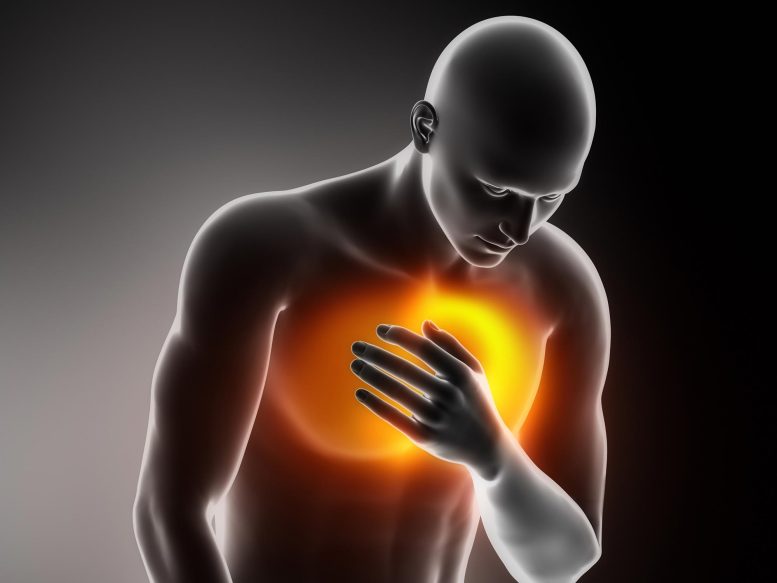Quit Smoking To Slash Your Heart Risk by 50% – Cutting Back Offers Little Benefit

Patients with stable coronary artery disease who stop smoking can cut their risk of major cardiovascular events by almost 50%.
According to research presented today at ESC Congress 2024,1 patients with stable coronary artery disease who quit smoking at any timepoint after their diagnosis reduced their risk of a major event by almost 50%. In contrast, there was minimal impact on cardiovascular risk in patients who reduced their smoking habits.
Findings From the CLARIFY Registry
The international CLARIFY registry (prospeCtive observational LongitudinAl RegIstry oF patients with stable coronary arterY disease) assessed the impact of smoking status on cardiovascular events in patients with coronary artery disease. The registry included 32,378 patients with the condition.
The occurrence of a major adverse cardiovascular event (MACE), defined as cardiovascular death or myocardial infarction during the 5-year follow-up period, was analyzed.
Key Window for Smoking Cessation
Patients were included in the study at an average of 6.5 years after their coronary artery disease diagnosis: at inclusion, 13,366 patients (41.3%) had never smoked, 14,973 (46.2%) were former smokers and 4,039 (12.5%) were current smokers. Among the former smokers who smoked at the time of coronary artery disease diagnosis, 72.8% discontinued smoking within the following year, while only 27.2% quit in subsequent years.
“Interestingly, the first year after diagnosis was the crucial window for quitting. At the time of diagnosis, we should emphasize the importance of quitting and support patients in this challenge,” said study author, Dr. Jules Mesnier of Hospital Bichat-Claude Bernard, Paris, France.
Long-term Benefits of Quitting Smoking
Patients who quit smoking after coronary artery disease diagnosis significantly improved their cardiovascular outcomes regardless of when they quit, with a 44% reduction in the risk of MACE (adjusted hazard ratio [HR] 0.56; 95% confidence interval [CI] 0.42–0.76; p<0.001).
Among smokers who reduced the amount smoked, the risk of MACE was not significantly altered compared with smokers who did not change their smoking habits (adjusted HR 0.96; 95% CI 0.74–1.26; p=0.78). The risk of MACE after a coronary artery disease diagnosis increased by 8% for each additional year of active smoking (adjusted HR 1.08; 95% CI 1.04–1.12 per year).
Although smokers who quit smoking achieved a rapid significant reduction in risk of MACE compared to smokers, they never achieved the cardiovascular risk level of patients who never smoked, even after years of smoking cessation.
Dr. Mesnier concluded: “I like to tell my patients that it is never too soon or too late to stop smoking, though the sooner a patient stops, the better to lower cardiovascular risk. And it is not enough to reduce smoking. Short, clear messages are needed for smokers at every medical intervention highlighting the need to quit. Telling patients they can cut their risk of a subsequent major event or death by half – as we have shown here – is a powerful message.” Measures to promote smoking cessation include brief advice, counseling, and behavioral interventions, as well as pharmacological therapy.
References
- The abstract “Trajectories in smoking habits and outcomes in patients with stable coronary artery disease” will be presented at the session ‘Epidemiology and risk factors in cardiovascular disease’, which takes place on Friday 30 August 2024 at 11:35 BST at Station 3.
- Reference: “2021 ESC Guidelines on cardiovascular disease prevention in clinical practice: Developed by the Task Force for cardiovascular disease prevention in clinical practice with representatives of the European Society of Cardiology and 12 medical societies With the special contribution of the European Association of Preventive Cardiology (EAPC)” by Frank L J Visseren, François Mach, Yvo M Smulders, David Carballo, Konstantinos C Koskinas, Maria Bäck, Athanase Benetos, Alessandro Biffi, José-Manuel Boavida, Davide Capodanno, Bernard Cosyns, Carolyn Crawford, Constantinos H Davos, Ileana Desormais, Emanuele Di Angelantonio, Oscar H Franco, Sigrun Halvorsen, F D Richard Hobbs, Monika Hollander, Ewa A Jankowska, Matthias Michal, Simona Sacco, Naveed Sattar, Lale Tokgozoglu, Serena Tonstad, Konstantinos P Tsioufis, Ineke van Dis, Isabelle C van Gelder, Christoph Wanner, Bryan Williams, ESC Scientific Document Group, Guy De Backer, Vera Regitz-Zagrosek, Anne Hege Aamodt, Magdy Abdelhamid, Victor Aboyans, Christian Albus, Riccardo Asteggiano, Magnus Bäck, Michael A Borger, Carlos Brotons, Jelena Čelutkienė, Renata Cifkova, Maja Cikes, Francesco Cosentino, Nikolaos Dagres, Tine De Backer, Dirk De Bacquer, Victoria Delgado, Hester Den Ruijter, Paul Dendale, Heinz Drexel, Volkmar Falk, Laurent Fauchier, Brian A Ference, Jean Ferrières, Marc Ferrini, Miles Fisher, Danilo Fliser, Zlatko Fras, Dan Gaita, Simona Giampaoli, Stephan Gielen, Ian Graham, Catriona Jennings, Torben Jorgensen, Alexandra Kautzky-Willer, Maryam Kavousi, Wolfgang Koenig, Aleksandra Konradi, Dipak Kotecha, Ulf Landmesser, Madalena Lettino, Basil S Lewis, Aleš Linhart, Maja-Lisa Løchen, Konstantinos Makrilakis, Giuseppe Mancia, Pedro Marques-Vidal, John William McEvoy, Paul McGreavy, Bela Merkely, Lis Neubeck, Jens Cosedis Nielsen, Joep Perk, Steffen E Petersen, Anna Sonia Petronio, Massimo Piepoli, Nana Goar Pogosova, Eva Irene Bossano Prescott, Kausik K Ray, Zeljko Reiner, Dimitrios J Richter, Lars Rydén, Evgeny Shlyakhto, Marta Sitges, Miguel Sousa-Uva, Isabella Sudano, Monica Tiberi, Rhian M Touyz, Andrea Ungar, W M Monique Verschuren, Olov Wiklund, David Wood, Jose Luis Zamorano, Yvo M Smulders, David Carballo, Konstantinos C Koskinas, Maria Bäck, Athanase Benetos, Alessandro Biffi, José-Manuel Boavida, Davide Capodanno, Bernard Cosyns, Carolyn A Crawford, Constantinos H Davos, Ileana Desormais, Emanuele Di Angelantonio, Oscar H Franco Duran, Sigrun Halvorsen, F D Richard Hobbs, Monika Hollander, Ewa A Jankowska, Matthias Michal, Simona Sacco, Naveed Sattar, Lale Tokgozoglu, Serena Tonstad, Konstantinos P Tsioufis, Ineke van Dis, Isabelle C van Gelder, Christoph Wanner and Bryan Williams, 30 August 2021, European Heart Journal.
DOI: 10.1093/eurheartj/ehab484
Source link




